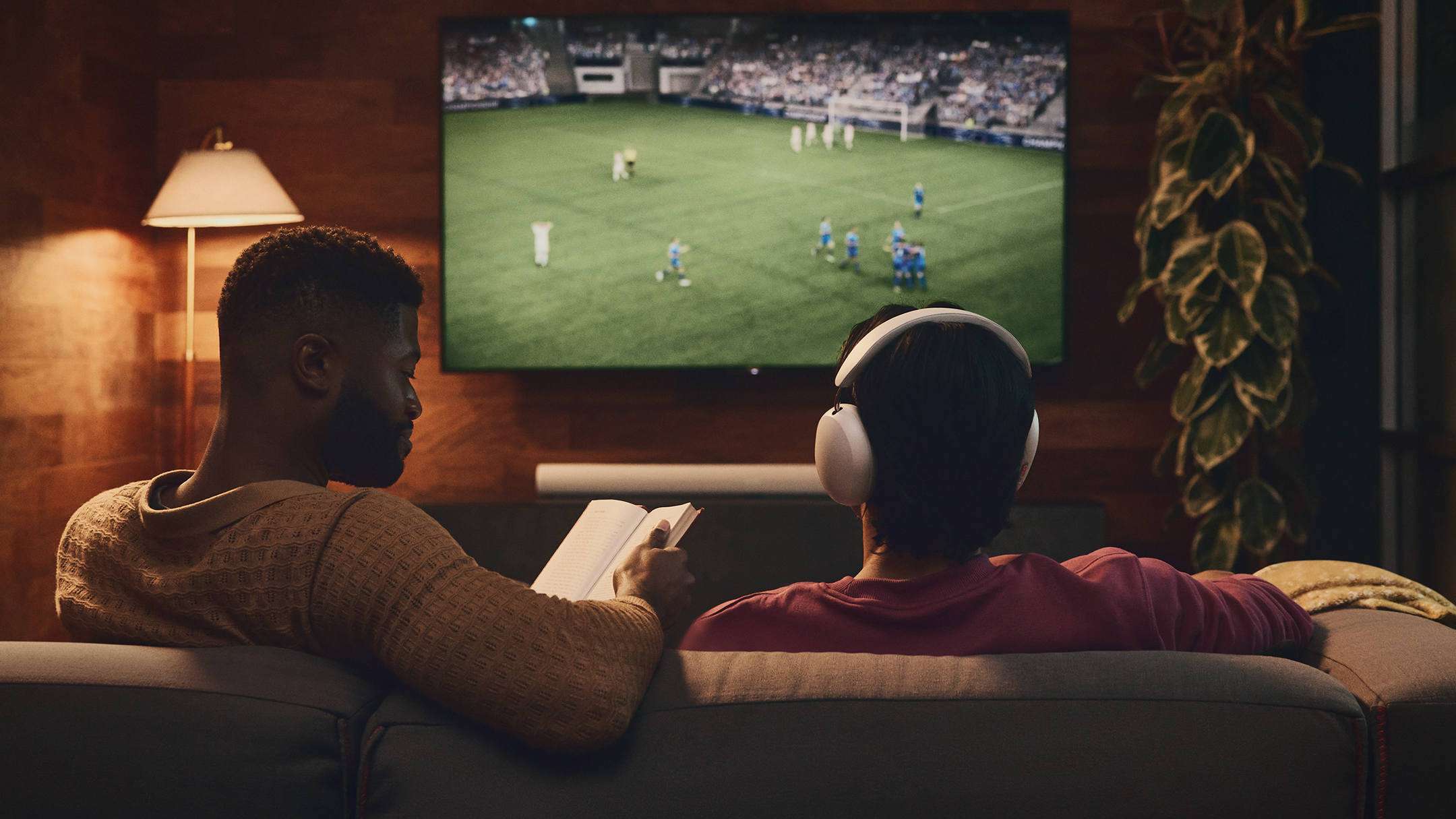
Sonos has revealed its new headphones – not called Sonos Headphones, but Sonos Ace – are now on sale, priced at £449/$449. But beyond simply being a pair of the best active-noise cancelling headphones you can buy in 2024, the Ace feature a special personalised Dolby Atmos spatial audio home cinema experience – which I initially tried back in late April to get a taste of how it works.
Called TV Audio Swap, the new Sonos feature will, at launch, work with the Sonos Ace headphones and the Sonos Arc soundbar via the new Sonos app (Apple iOS only at launch, Android is coming soon thereafter).
By using either the app or the Ace's multi-functional toggle-button control, it's possible to activate 'TV Audio Swap' and bring the experience from in-room surround to in-headphones surround. I tested out the experience while watching a section of the excellent Barbie movie – and the effect is impressive.
1. Room-measured sound profile
So this sounds like any other spatial audio experience in headphones, no? Not quite! Another technology, called Sonos TrueCinema, works a little like the company's TruePlay feature – a feature which measures room reflection, to adapt sound to compensate for bounce and decay at different frequencies for a cleaner audio output – to measure the room first.
Sonos tells T3 that "TrueCinema is a technology for measuring the general acoustics of your room, and applying those characteristics to the spatial audio engine for Sonos Ace."
Why does that matter? Sonos' goal is to recreate the sound output you experience from the Arc in that specific room setup, but direct to your ears via Wi-Fi. It'll give listeners a familiar, comfortable and more at-home feeling, not a 'locked-in' feeling that might feel uneasy or unfamiliar.
I didn't experience the TrueCinema setup process – even when setting up my own new Arc system at home – but it was explained to me by Sonos' Head of Innovation during my initial private listening session. Similar to TruePlay, the soundbar will emit 'sweep' sounds to measure the room, while the listener is sat in their perfect viewing spot. It'll take under a minute all in all.
2. Profile per Arc soundbar
Interestingly the TrueCinema profile is then saved on that specific Sonos Arc soundbar, so that any Sonos Ace headphones utilised with said soundbar will gain the same experience and "enhance the sense of externalisation, spaciousness, and immersivity," Sonos tells T3. That saves needing to perform the process again.
If you have one Arc upstairs and one downstairs, those two profiles will be distinct from one another. However, only one pair of headphones can connect at any time – you can't have a dual- or multi-listener experience using multiple pairs of Sonos Ace headphones.
3. Dolby Atmos spatial audio
Because the Sonos Arc soundbar is performing the sound processing and then sending this to the Sonos Ace heapdhones via Wi-Fi, it's able to deliver Dolby Atmos spatial audio, but can also upmix stereo into a 7.1.4 equivalent surround for your ears too.
The Sonos Ace headphones can perform in-headphones processing for general listening, too, such as from Dolby Audio sources directly – whether Spotify, Apple Music or elsewhere – but can't upmix stereo audio in this way.
During my Barbie screener, I got a real sense of the surround sound's motion. Indeed, many subtleties of the rear channels felt enhanced in this on-ear experience, highlighting even more detail than I'd expected. Bass is present but not overbearing – not a replacement for a Sonos Sub Mini, but a solid on-ear experience nonetheless.
4. Head-tracking too
Within the Sonos Ace headphones is an inertial measurement sensor (IMU for short), which can detect and track the direction of your head. That's an essential for spatial audio to adapt the sound when you move your head, so it'll give that 'always centered' experience based on what you're watching – as if you're sitting within the sound mix.
Other manufacturers do of course deliver similar experiences, such as Apple AirPods Max via Apple TV 4K, or the Bose QuietComfort Ultra Headphones with a two-tier 'Immersion' system (for static or head-motion, the former designed for when on the move). For TV Audio Swap specifically I think the Sonos TrueCinema delivery has the edge – but I think Bose is better for applying its feature to general listening sessions.
5. What about other Sonos soundbars?
At launch (on 5 June 2024) the Sonos TrueCinema and TV Audio Swap feature will only work between Sonos Ace headphones and the Sonos Arc soundbar. However, Sonos is working to deliver the feature from all its soundbar products. I suspect Beam owners will be particularly keen.
That means in the future (at to-be-determined dates) there will be compatibility for Sonos Beam (Gen 2), Sonos Ray, and the original Sonos Beam soundbars. In those instances, as the system may be able to read a broader frequency spectrum than a given soundbar can deliver, I suspect the in-headphones experience may even sound better.
All in all, Sonos' TrueCinema and TV Audio Swap combination makes for a standout new feature for those who want a personalised home cinema listening experience – without disturbing others around them. At launch it's somewhat limited in scope, though, so I hope those soundbar and Android compatibility updates roll out pronto!







